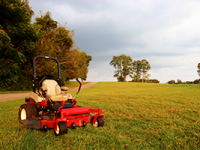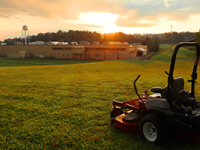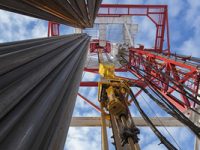Top 9 Parker Blogs of 2018
 2018 marked Parker’s strongest year of financial performance in the company’s history (view Annual Report in “Related Posts” at the end of the blog). Our focus on solving some of the world’s greatest engineering challenges sparks our passion for innovation and secures our future growth.
2018 marked Parker’s strongest year of financial performance in the company’s history (view Annual Report in “Related Posts” at the end of the blog). Our focus on solving some of the world’s greatest engineering challenges sparks our passion for innovation and secures our future growth.
Our engineering expertise now spans the core motion and control technologies – aerospace, climate control, electromechanical, filtration, fluid and gas handling, hydraulic, pneumatic, process control, and sealing and shielding.
Following these nine core technologies’ blogs is a great way to be in the know of innovative developments as they happen. Below is the top 2018 blog from each technology category.
Aerospace:
F-35 Lightning II Fuel and Inerting System Powered by Parker Aerospace – As the United States military embarked to build the second ever fifth-generation fighter aircraft, Parker Aerospace’s Fluid Systems Division (FSD) was selected in the mid-1990s to provide the fuel system and the onboard inert gas generating system (OBIGGS) for the F-35 Lightning II program.
Climate Control:
HVACR Tech Tip: How to Properly Clean a Condenser Coil – Condenser coil cleaning is one of those subjects in which there is much misdirection and misinformation being propagated by some manufacturers/distributors that has caused unfortunate confusion in the industry. This blog answers to common questions to set the record straight on the use of these products.
Electromechanical: 
How VFD Technology on Hydraulic Power Units Helps Improve Performance – Combining electronic and hydraulic technologies can add efficiency and functionality to machinery and processes that use hydraulic pressure to operate. The hydraulic power unit (HPU), a workhorse of the industry, can demonstrate optimized performance through the use of variable frequency drive (VFD) technology. The combination of these two technologies creates what is referred to as a DCP–Drive Controlled Pump.
Filtration:
Three Safety Issues to Consider When Using Compressed Nitrogen Gas Cylinders – Approximately 36 percent of nitrogen gas supplied by gas companies is delivered in high-pressure cylinders. At first, it would appear to be a fairly simple method of supply, requiring a cylinder, pressure regulator and piping to deliver nitrogen gas to the application. However, the following checks and procedures must be carried out every time a cylinder is exchanged and the pressure regulator re-fitted and re-connected to a gas system to ensure safe operation.
Fluid and Gas Handling:
What Are the Differences Between Pipe Threads and Straight Threads? – Traditionally, DOT-rated compression and push-to-connect fittings use American National Standard Taper Pipe Threads, referred to as NPTF pipe threads. NPTF or pipe fittings feature tapered threads providing the mechanical strength needed to hold the joint together, plus the metal-to-metal sealing formed when the tapered threads are tightened against tapered port threads. This thread type requires the use of a thread sealant to seal any spiral leak paths or voids that may remain between the tapered threads on the fitting and threads on the port.
 Hydraulics:
Hydraulics:
Read This if Your Wind Turbines Are Overheating – Rising temperatures – which lead to water evaporation and loss of coolants in critical wind turbine cooling systems – may cause 1.5 MW wind turbines to overheat. Fortunately, there’s a solution to help keep your wind turbines running efficiently and in good working order.
Pneumatics:
How to Use Smart Sensors to Aid Predictive Maintenance Strategies – When optimally selected and applied, the latest generation of smart sensors can have a positive impact on predictive maintenance strategies for fluid power applications.
Real-time data collection via smart sensors can influence decisions about when to schedule downtime to carry out maintenance operations, helping to maximize productivity.
Process Control:
10 Tips to Ensure Best Practice in the Installation of Condensate Pots – Condensate pots play a key role in maximizing the accuracy of differential pressure flow measurement on steam or vapor applications. When installed correctly, these simple devices can significantly improve flow measurement accuracy in differential pressure measurement systems by providing an interface between the vapor and liquid phases.
Condensate pots also prevent flashing of liquid in the impulse line, which can occur if there is a sudden change in the temperature of the steam.
Sealing and Shielding:
O-Ring Selection Made Easy with the Parker O-Ring Selector – Two things are equally important for the reliable performance of an O-Ring seal: the right size and the right material. Parker’s new O-Ring Selector is an engineering tool that enables users to make the right material and size selections easily, quickly and reliably – in a single application. The accuracy of the results ensures the desired performance of the O-Ring in the subsequent application. This is primarily based on the fact that both functionalities – the material selection and the O-Ring size calculation – are closely interlinked. This achieves a new quality in calculating the total sealing system.
Related Posts:
The Year in Review: Our Top 5 EMI Shielding Blog Posts of 2018
Most Popular Filtration Technology Blogs of 2017
5 Technology Trends Behind the Top Hydraulics Blogs of 2017
Top 5 HVACR and HVAC Climate Control Technology Blogs of 2017
Entrepreneurial Spirit Fuels Parker’s Family
Source: Parker Feed





